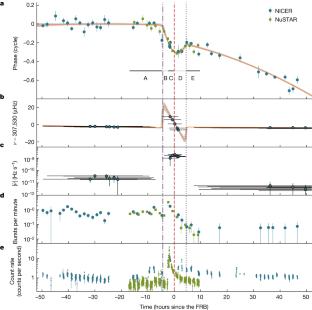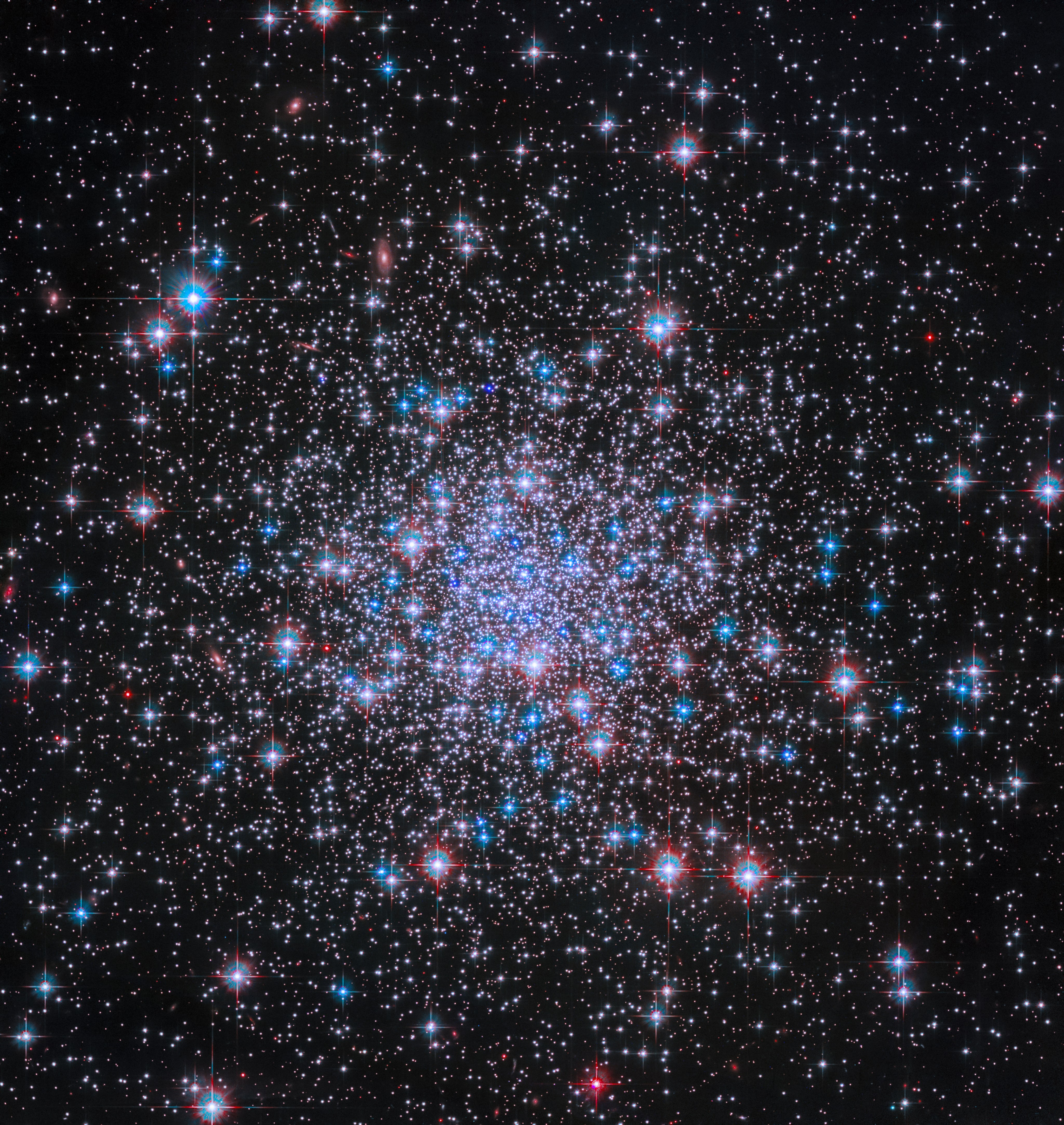2024-02-14 NASA
<関連情報>
- https://www.nasa.gov/missions/nustar/nasa-telescopes-find-new-clues-about-mysterious-deep-space-signals/
- https://www.nature.com/articles/s41586-023-07012-5
マグネター高速電波バースト周辺でスピンが急速に変化 Rapid spin changes around a magnetar fast radio burst
Chin-Ping Hu,Takuto Narita,Teruaki Enoto,George Younes,Zorawar Wadiasingh,Matthew G. Baring,Wynn C. G. Ho,Sebastien Guillot,Paul S. Ray,Tolga Güver,Kaustubh Rajwade,Zaven Arzoumanian,Chryssa Kouveliotou,Alice K. Harding & Keith C. Gendreau
Nature Published:14 February 2024
DOI:https://doi.org/10.1038/s41586-023-07012-5

Abstract
Magnetars are neutron stars with extremely high magnetic fields (≳1014 gauss) that exhibit various X-ray phenomena such as sporadic subsecond bursts, long-term persistent flux enhancements and variable rotation-period derivative1,2. In 2020, a fast radio burst (FRB), akin to cosmological millisecond-duration radio bursts, was detected from the Galactic magnetar SGR 1935+2154 (refs. 3,4,5), confirming the long-suspected association between some FRBs and magnetars. However, the mechanism for FRB generation in magnetars remains unclear. Here we report the X-ray observation of two glitches in SGR 1935+2154 within a time interval of approximately nine hours, bracketing an FRB that occurred on 14 October 20226,7. Each glitch involved a significant increase in the magnetar’s spin frequency, being among the largest abrupt changes in neutron-star rotation8,9,10 observed so far. Between the glitches, the magnetar exhibited a rapid spin-down phase, accompanied by an increase and subsequent decline in its persistent X-ray emission and burst rate. We postulate that a strong, ephemeral, magnetospheric wind11 provides the torque that rapidly slows the star’s rotation. The trigger for the first glitch couples the star’s crust to its magnetosphere, enhances the various X-ray signals and spawns the wind that alters magnetospheric conditions that might produce the FRB.



